Blue Nuance (Hue)
As described in our CVD vs. HPHT review, the process used to create a lab diamond affects its color hue. HPHT diamonds can have a bluish hue due to boron impurities (sometimes noted as “blue nuance” or “faint blue” on grading reports). Natural diamonds with blue hues are rare; they typically have a yellowish hue due to nitrogen impurities. If the goal is to find a lab diamond that is visually similar to a natural diamond, then diamonds with a blue hue should be screened out.
We’ve developed a computer vision-based approach to automatically classify whether a lab diamond has a blue hue (implemented as a toggle in our lab diamond price curves). A motivating example is shown below. Both 1.21ct F VS1’s are identical in terms of carat, color, clarity, cut, and price. However, the diamond on the left has a yellow hue while the diamond on the right has a blue hue. Our algorithm can identify blue hue in an automated way to help speed up the search process for a nice lab diamond.
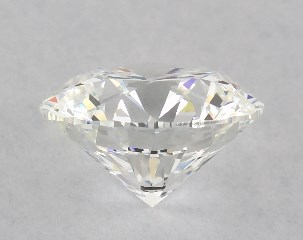
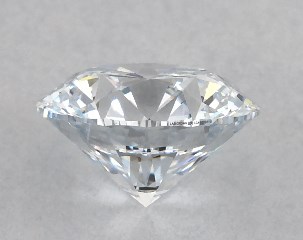
Background Removal
The first step in the image processing pipeline is to remove the background. Edge detection algorithms can be used to create a mask to separate the foreground from the background. Our background contours are not perfect, but they are good enough for our purpose of evaluating diamond body color.
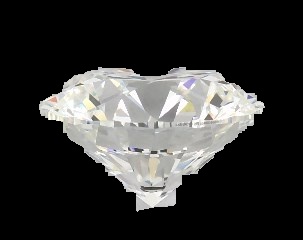
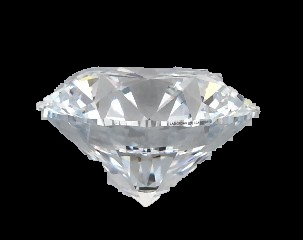
Color Space
The next step is to transform the image into the HSL color space. Working in HSL makes it easier to determine if a pixel is blue compared to working in the RGB color space.
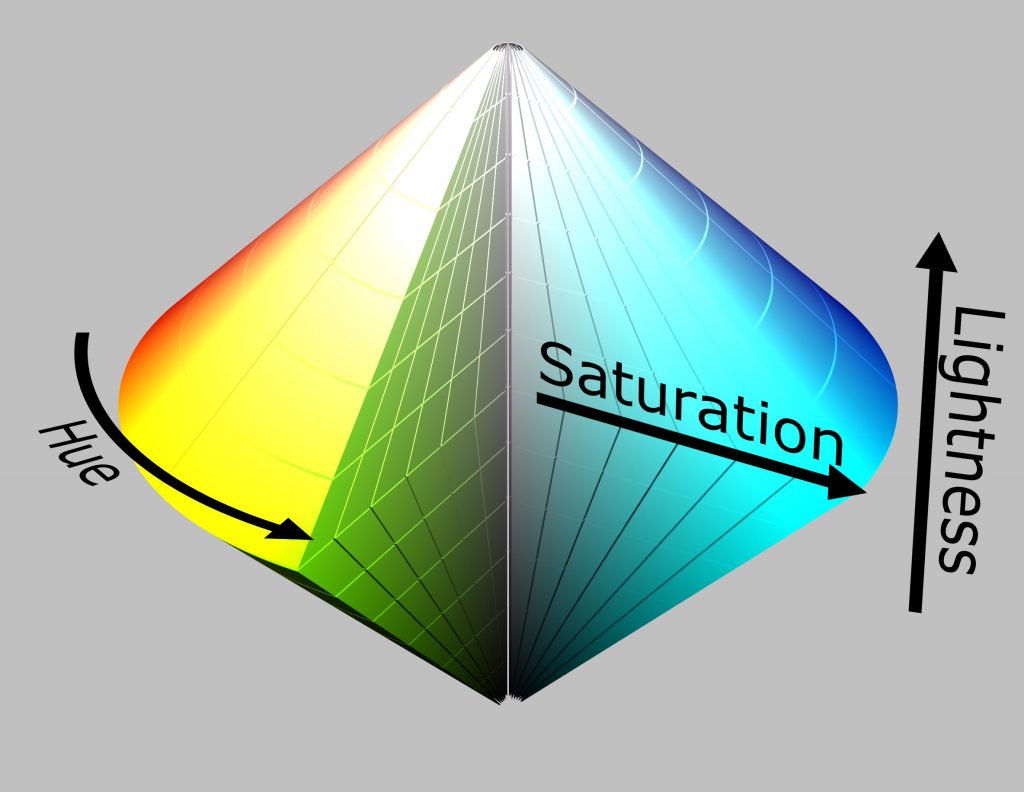
HSL is also the scale/color space GIA uses to grade fancy color diamonds. Note how GIA’s sphere of hue, saturation, and tone (lightness) is the same as the HSL color model.
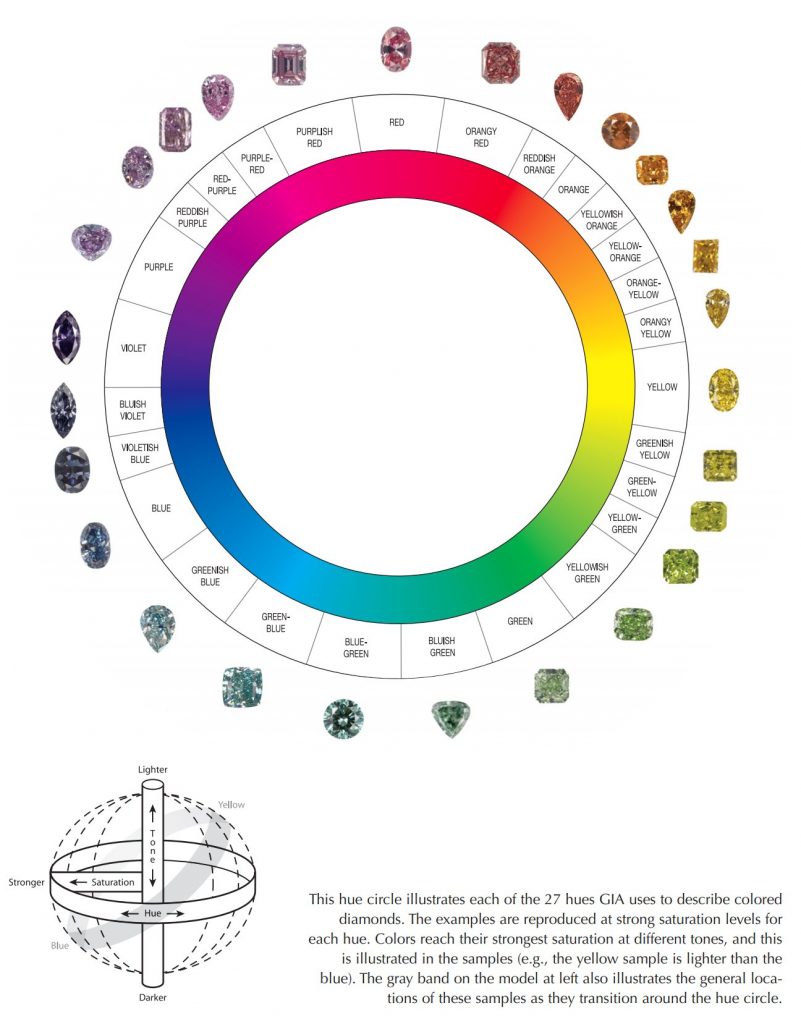
How blue is it?
With a way to identify blue pixels, we can now score the blueness of each image. In the figure below, we’ve plotted our blue hue score distributions for all round lab diamonds on James Allen’s site, stratified by color grade.
The score distribution for the F color grade is exactly what you hope to see when constructing a classifier. It’s a bimodal score distribution that separates the two classes with no overlap.
F color is the last color grade where the blue hue score distribution is distinct. Color hue is less differentiated with D and E (as expected because D and E are at the top of the color scale). In our classifier, we use the same score cutoff derived from F/G on D/E diamonds. This works well in practice – it does a good job of identifying the D/E diamonds with a blue hue based on our spot-checking.
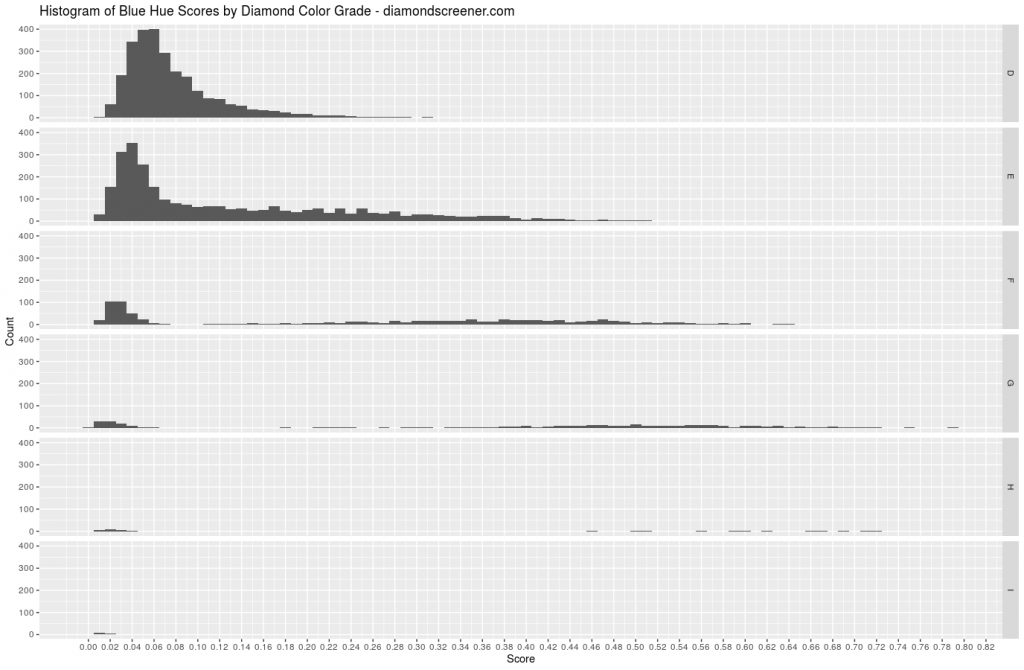
What about CVD brown hue?
We’ve developed a way to automatically identify HPHT diamonds with a blue hue. However, CVD diamonds with a brown hue are arguably more important to avoid. Natural diamonds with a brown hue are less desirable and trade a discount compared to diamonds with a yellow hue.
Unfortunately, brown is much harder to identify than blue. Brown is a composite color, not a specific hue (note its absence from the hue circle). Automated screening of brown CVD diamonds will require more research.